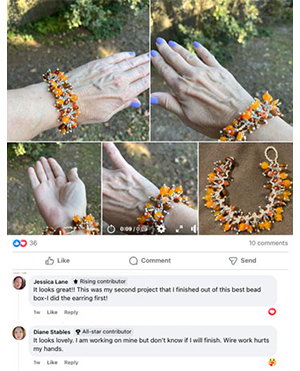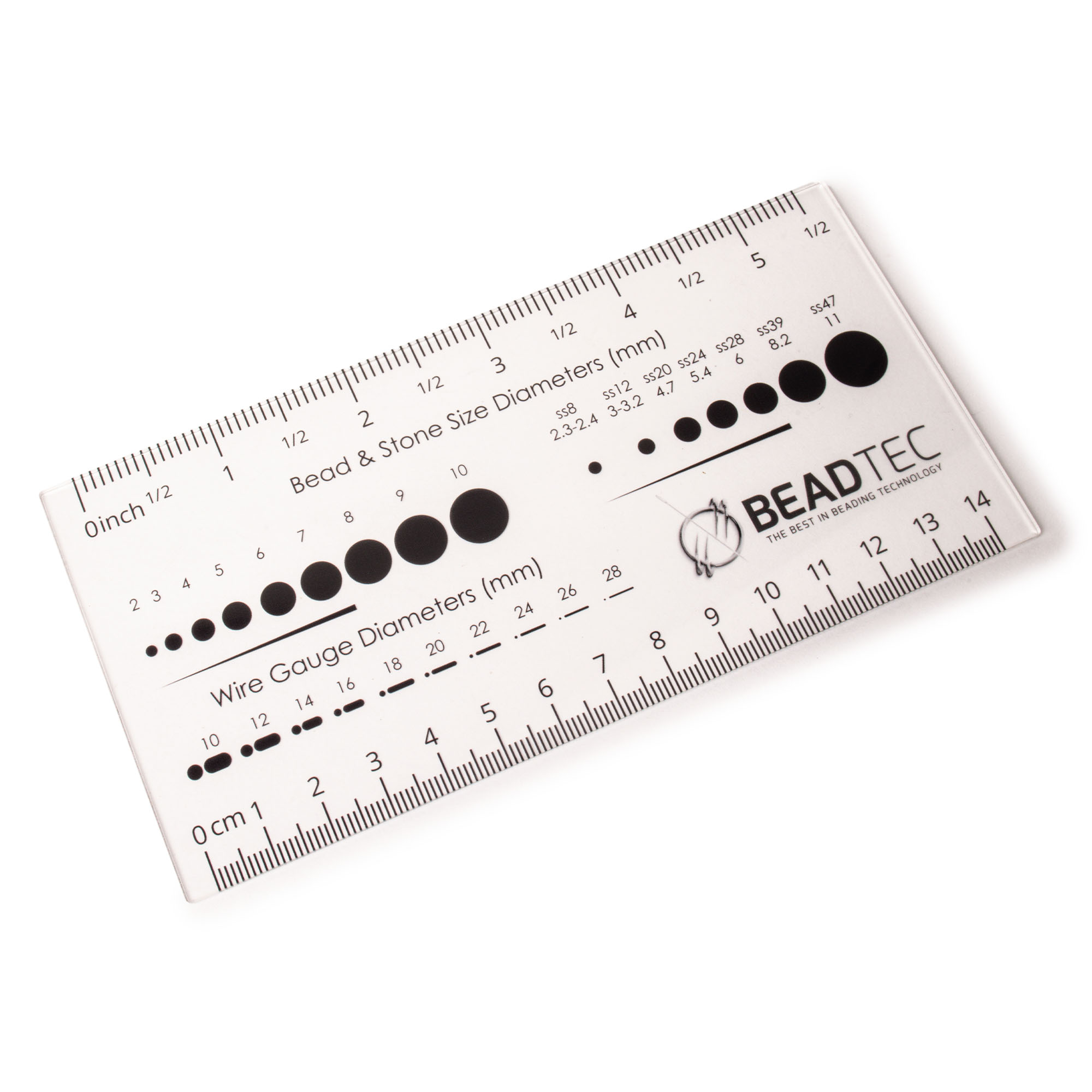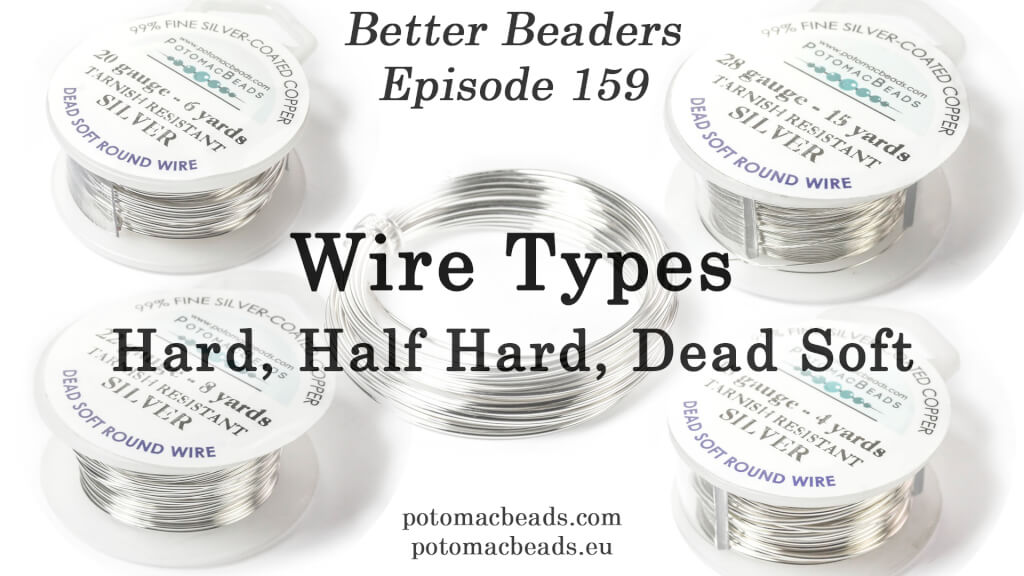- Jewelry-Making Supplies ▾
Design Jewelry with Confidence!
Seed Beads
Thread, Wire, & Stringing Materials
Athenacast Findings & Components
Everything Else
- Kits & Collections ▾
Assemble Your World
Kits & Collections
- Subscriptions ▾
Want monthly Beading Happiness?
Subscriptions
- Learn to Make ▾
Want to learn more?
- Discounts & Deals ▾
Explore Today's Promotions!
- Jewelry-Making Supplies
- Kits & Collections
- Subscriptions
- Learn to Make
- Discounts & Deals
-
Seed Beads
Thread, Wire, & Stringing Materials
Findings & Components
Everything Else
-
Kits & Collections
-
Subscriptions
- Home
- How to Make Jewelry
- Better Beader Episodes
- Wire: Hard, Half Hard, & Soft
Wire: Hard, Half Hard, & Soft

Watch the Video Tutorial
Watch the Video Tutorial
Need Any Extra Materials?
Need Any Extra Materials?
Need Any Extra Materials?
Need Any Extra Materials?
Episode Transcript
Episode Transcript
Introduction
In this Better Beader episode from Potomac Beads, we dive into the world of wire types and their unique properties. Understanding the differences between hard, half hard, and dead soft wire is essential for creating stunning jewelry pieces that are both durable and easy to work with. In this article, we'll explore the key characteristics of each wire type and provide tips on when to use them in your beading projects.
Hard Wire
Hard wire is a rigid and sturdy option that holds its shape well. It's perfect for creating structured pieces like wire frames, clasps, and ear wires. Some key features of hard wire include:
- Maintains its shape and resists bending
- Ideal for projects that require stability and durability
- Can be challenging to manipulate and may require more strength
Half Hard Wire
Half hard wire offers a balance between flexibility and strength. It's a versatile choice for a wide range of jewelry-making techniques. Here's what you need to know about half hard wire:
- Provides a good balance of malleability and resilience
- Suitable for creating loops, spirals, and other shaped components
- Can be worked with pliers or bent by hand
- Holds its shape well after forming
Dead Soft Wire
Dead soft wire is the most pliable and easiest to manipulate. It's an excellent choice for wire weaving, wire wrapping, and creating intricate designs. Keep these characteristics in mind when working with dead soft wire:
- Extremely flexible and easy to bend and shape
- Ideal for creating curves, twists, and delicate wire work
- Requires minimal effort to manipulate
- May not hold its shape as well as harder wire types
Choosing the Right Wire Type
When selecting wire for your beading projects, consider the following factors:
- The desired structure and stability of the finished piece
- The techniques you'll be using (e.g., wire wrapping, looping, or weaving)
- The level of detail and intricacy required for your design
Experiment with different wire types to find the one that best suits your project and personal preferences.
Tips for Working with Wire
- Use the appropriate tools for each wire type to avoid damaging the wire or your pliers
- Work the wire gently to prevent kinks or breaks, especially with dead soft wire
- Straighten wire before use by running it between your fingers or using a nylon jaw plier
- Practice new techniques on scrap wire before using your final materials
Conclusion
Understanding the differences between hard, half hard, and dead soft wire empowers you to make informed decisions when creating jewelry pieces. Each wire type has its own strengths and applications, so don't be afraid to experiment and find what works best for you. Happy beading!
Join Our Growing Community
Join Our Growing Community




Our Testimonials
Our Testimonials
- 56270 (83.6%)
- 4843 (11.2%)
- 3319 (4.3%)
- 235 (0.5%)
- 129 (0.4%)
- Favorite Reviews
- Highest to Lowest
- Newest to Oldest
- All Ratings
- 5 ★ Reviews
- 4 ★ Reviews
- 3 ★ Reviews
- 2 ★ Reviews
- 1 ★ Reviews
So far, so good. Looking forward to receiving my order. I wish the description in the kits indicated the difficulty level of the project. Update: Beads received. Potomac Beads quickly reached out with difficulty rating answer and a guidance video. Thank you!
Loading...
Only Visible on Admin Mode
Item Description
Designer's Material List
Project Steps
Manipulating the Wire: Use round nose pliers to shape the wire, noting the difference in effort required for each type.
Selecting the Wire: Opt for soft wire for easier manipulation, especially if you are a beginner.
Hardening Soft Wire: Use a hammer and mallet to harden soft wire after shaping, if necessary.
Finishing Touches: Finalize your jewelry piece, taking note of how the wire type influences the final product.
Highest Quality
Products
100% Money
Back Guarantee
Fast
Shipping
Best Teaching &
Customer Service
You'll want these emails...
Get Free Projects & Inspiration
Get Free Projects & Inspiration
- Bullet 1
- Bullet 2
- Bullet 3
Copyright © PotomacBeads









